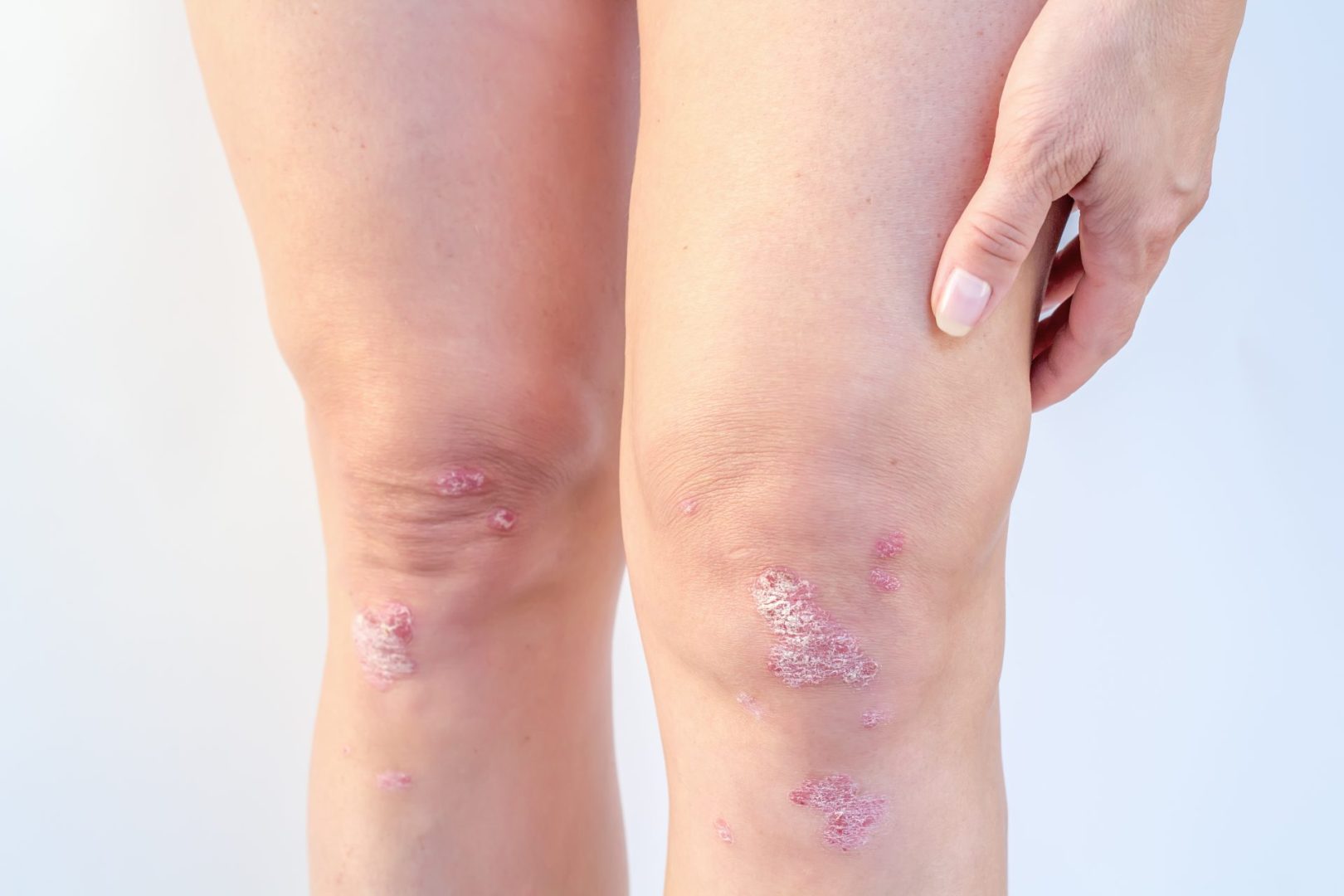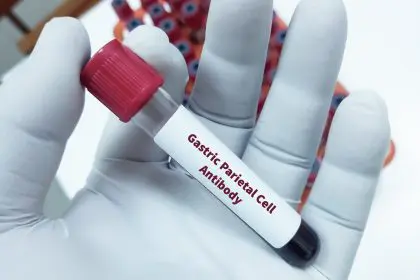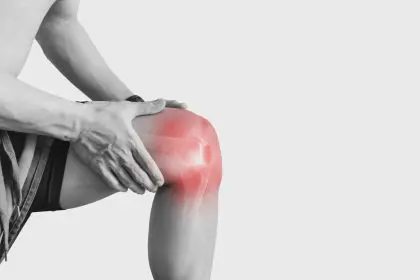This autoimmune condition affects both skin and joints, but catching it early makes all the difference
When the immune system mistakenly attacks healthy cells in both the skin and joints, the result is psoriatic arthritis—a challenging condition that affects approximately 1 million Americans. While related to psoriasis, this form of inflammatory arthritis brings its own unique set of challenges. Understanding the early warning signs can lead to faster diagnosis and treatment, potentially preventing permanent joint damage and improving quality of life. Here’s what to know about identifying, managing, and living with psoriatic arthritis.
The connection between skin and joints
Psoriatic arthritis represents a complex interplay between two distinct conditions. For most people, the skin symptoms appear first—typically red, scaly patches known as plaques that can appear anywhere on the body but often favor the scalp, elbows, and knees. These patches result from an overactive immune system speeding up skin cell production, causing cells to build up rapidly on the surface.
In most cases, joint symptoms develop years after the initial skin manifestations. Over 80% of people diagnosed with psoriatic arthritis experience psoriasis first, with joint problems typically appearing 7-10 years later. However, this timeline isn’t universal—some individuals develop joint symptoms before any skin issues, while others experience both simultaneously.
What makes this condition particularly challenging is its unpredictable nature. Symptoms can range from mild discomfort to debilitating pain, and they often fluctuate over time with periods of flare-ups and remission. This variability contributes to delayed diagnosis, with many people enduring symptoms for years before receiving proper treatment.
Six telltale signs to watch for
- Persistent joint pain and stiffness affects multiple areas of the body, particularly after periods of rest or inactivity. Morning stiffness lasting more than 30 minutes represents a key distinguishing feature. Unlike osteoarthritis that typically worsens throughout the day with activity, psoriatic arthritis pain often improves with movement and worsens with rest.
- Swollen fingers and toes, medically termed dactylitis, create a distinctive “sausage-like” appearance. This swelling differs from typical joint inflammation because it affects the entire digit, not just the joint itself. The swelling may be accompanied by a purplish discoloration and can make even simple tasks like typing or walking uncomfortable.
- Nail changes provide some of the earliest and most specific indicators of psoriatic arthritis. These changes include pitting (small depressions in the nail surface), onycholysis (separation of the nail from the nail bed), and hyperkeratosis (thickening of the nail). About 80% of people with psoriatic arthritis develop nail changes at some point, making this an important diagnostic clue.
- Enthesitis refers to inflammation where tendons and ligaments attach to bones. This hallmark symptom commonly affects the Achilles tendon, causing heel pain when walking or standing. It may also appear at the elbows, ribs, spine, and pelvic bones. This pattern of inflammation helps distinguish psoriatic arthritis from other forms of inflammatory arthritis.
- Fatigue and reduced energy levels affect nearly half of all people with psoriatic arthritis. This exhaustion goes beyond normal tiredness and can significantly impact daily functioning. The fatigue stems from the body’s inflammatory response and the energy it consumes, along with the disrupted sleep that often accompanies chronic pain.
- Lower back pain and stiffness may indicate a form of psoriatic arthritis that affects the spine, called psoriatic spondylitis. This condition causes inflammation between vertebrae and in the joints between the spine and pelvis. Morning stiffness in the lower back that improves with activity represents a classic symptom of this spinal involvement.
How the condition progresses without treatment
Left untreated, psoriatic arthritis can lead to permanent joint damage within just a few years of onset. The persistent inflammation erodes cartilage and bone, eventually resulting in joint deformity and disability. This progressive damage explains why early diagnosis and treatment remain critical goals.
Beyond joint damage, untreated disease increases the risk of several complications. Eye inflammation (uveitis) affects approximately 7% of people with psoriatic arthritis and can threaten vision if not promptly treated. Cardiovascular disease risk also rises significantly, with inflammation contributing to arterial plaque buildup. Additionally, about 10% develop inflammatory bowel conditions like Crohn’s disease or ulcerative colitis.
The psychological impact cannot be overlooked either. The visible nature of skin symptoms, combined with physical limitations from joint involvement, often leads to depression, anxiety, and social isolation. These mental health challenges further compound the physical burden of the disease.
Current management approaches
While no cure exists, modern treatment approaches aim to control inflammation, relieve symptoms, prevent joint damage, and maintain quality of life. Treatment plans typically involve a combination of approaches tailored to individual needs.
Medications form the cornerstone of treatment. Nonsteroidal anti-inflammatory drugs (NSAIDs) help manage pain and reduce inflammation for milder cases. Disease-modifying antirheumatic drugs (DMARDs) like methotrexate slow disease progression by suppressing the immune system. For more severe cases, biologic therapies target specific components of the immune system involved in inflammation, offering significant relief for many patients.
Physical therapy plays a crucial role in maintaining joint function and preventing muscle weakness. Targeted exercises strengthen supporting muscles, improve flexibility, and enhance overall physical function. Occupational therapy can help with adaptations for daily activities, preserving independence despite joint limitations.
Lifestyle modifications complement medical treatment. Regular, low-impact exercise like swimming, walking, or cycling helps maintain joint mobility without adding stress to inflamed joints. Diet choices may also influence symptoms—some people report benefits from Mediterranean diet patterns rich in anti-inflammatory foods like fish, olive oil, nuts, and vegetables.
Stress management deserves special attention, as emotional stress frequently triggers flare-ups. Techniques such as mindfulness meditation, deep breathing exercises, and adequate sleep all contribute to better disease control. Some find that yoga combines the benefits of gentle movement with stress reduction.
The diagnostic journey
Diagnosing psoriatic arthritis often proves challenging due to its variable presentation and overlap with other conditions. No single test can confirm the diagnosis, requiring a comprehensive approach that considers symptoms, physical examination, medical history, and various tests.
Imaging plays a key role in assessment. X-rays can show joint damage in established disease but may appear normal in early stages. Magnetic resonance imaging (MRI) detects earlier changes, including inflammation in both joints and entheses. Ultrasound also helps visualize inflammation in tendons and joint structures.
Blood tests help rule out other forms of arthritis but cannot definitively diagnose psoriatic arthritis. Unlike rheumatoid arthritis, most people with psoriatic arthritis test negative for rheumatoid factor, making it a “seronegative” arthritis. Tests for general inflammation markers like C-reactive protein often show elevation during active disease.
Specialist referral becomes essential for proper diagnosis and treatment. Rheumatologists specialize in joint diseases, while dermatologists focus on skin conditions. For many patients, coordinated care between these specialists yields the best outcomes.
Living well with psoriatic arthritis
Despite the challenges, many people with psoriatic arthritis lead full, active lives through effective treatment and self-management strategies. Staying informed about the condition helps patients become active partners in their care, making informed decisions alongside healthcare providers.
Pacing activities helps manage energy levels and prevent overexertion. This might mean breaking larger tasks into smaller segments, alternating periods of activity with rest, and prioritizing essential activities during periods of greater energy. Learning to recognize early signs of a flare-up allows for prompt intervention, potentially reducing its severity and duration.
Assistive devices can make daily activities easier while protecting joints. Simple tools like jar openers, ergonomic utensils, or long-handled shoehorns reduce strain on affected joints. For those with foot involvement, proper footwear with adequate support and cushioning becomes essential for comfort and mobility.
Building a support network proves invaluable for long-term coping. While friends and family provide emotional support, connecting with others who have psoriatic arthritis offers a unique understanding. Online and in-person support groups provide practical tips, emotional validation, and the comfort of knowing others face similar challenges.
The journey with psoriatic arthritis involves learning to adapt to an unpredictable condition. Flares will come and go, treatments may need adjustment over time, and new challenges may arise. Yet with proper medical care, self-management skills, and support, most people find ways to thrive despite these challenges.
Recognizing the early warning signs represents the critical first step. For anyone experiencing suspicious symptoms, particularly those who already have psoriasis, prompt medical evaluation can set the stage for better long-term outcomes and preservation of joint function. With today’s expanded treatment options, the outlook for people with psoriatic arthritis continues to improve.















